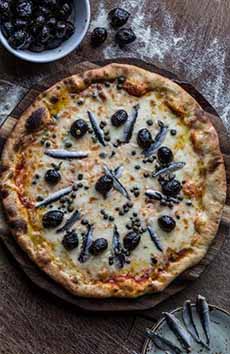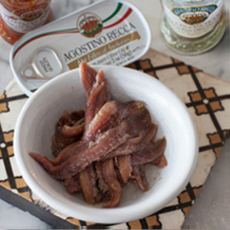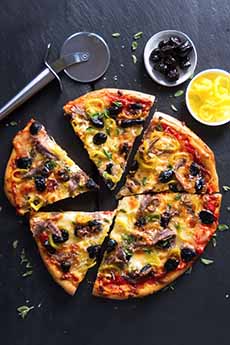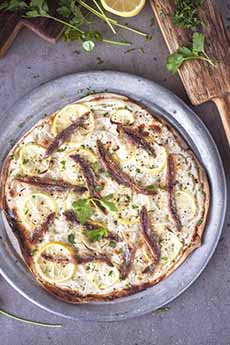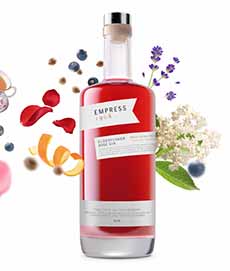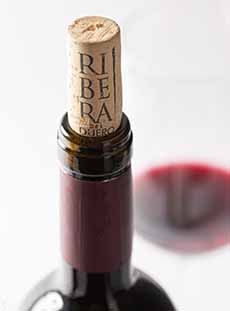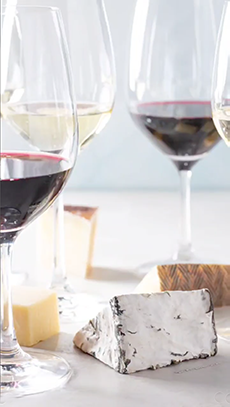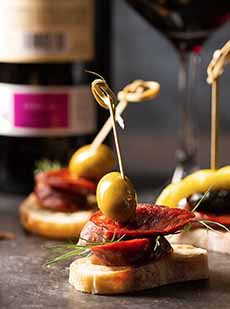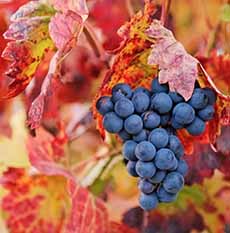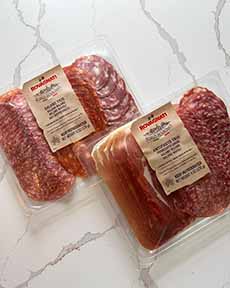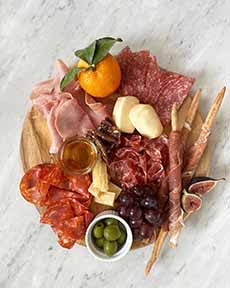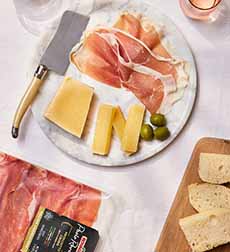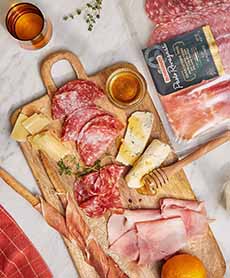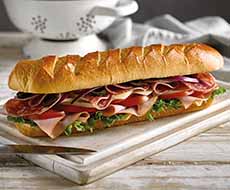|

[1] This beauty is spoonable, and when super-ripe, it becomes pourable (all photos © Jasper Hill Farm).

[2] When on the younger side, the bark can be peeled away for sliced portioning. If the paste is gooey and the bark has fused with it, then leave the bark intact, cut away a portion of the top or all of it (save it for eating), and spoon out cheese from the top.
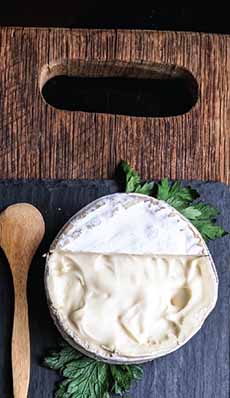
[4] The top neatly cut away for scooping.

[5] Cheeses aging in the vault.

[6] For you or for gifting: five of Jasper Hill Farm’s memorable cheeses.
|
|
One of our favorite fine cheeses has just taken home the coveted Super Gold medal at last week’s World Cheese Awards, held in Trondheim, Norway.
It also won the trophy for Best American Cheese.
This is a magnificent cheese for a cheese connoisseur or for someone who wants to become one.
Harbison is a soft-ripened cheese with a rustic, bloomy rind. The pasteurized cow’s milk cheese has a bloomy rind (like Brie) and is bark-wrapped.
Young cheeses are wrapped in strips of spruce cambium, the tree’s inner bark layer, harvested from the woodlands of Jasper Hill in Greensboro, Vermont.
The spoonable texture begins to develop in Jasper Hill Farm’s vaults, and the paste (the interior) continues to soften on the way to market.
The texture is voluptuous, the aroma scintillating. On the palate, the oh-so-creamy cheese yields notes of button mushroom, mustard, raspberry, sweet cream, and a woodsy flavor from the bloomy rind.
PAIRING HARBISON WITH OTHER FOODS
Harbison is a great excuse to gather a few friends and scoop into a special treat.
For drinking, pair it with an oaky white wine like Chardonnay, or barrel-aged sour beer.
Serve it with crusty bread or plain crostini and for a cheese condiment, a fruit mostarda.
One cheese writer suggests serving it with French fries sprinkled with fresh thyme, which complements the woodsy flavors.
> Check out our guide to cheese condiments.
GET YOUR HARBISON CHEESE
Blue cheese lovers: Jasper Hill Farm’s Bayley Hazen Blue also took home a gold medal in the blue cheese category, and Willoughby picked up a gold medal in the washed rind cheese category.
In a field of more than 4,000 entries from around the world, Jasper Hill Farms won five medals. Great work, team!
In addition to Harbison, Bayley Hazen Blue, and Willoughby, there are gift boxes of simply splendid cheeses. Everything from Jasper Hill Farm is special.
> Head to JasperHillFarm.com.
> The history of cheese.
> The different types of cheese: a glossary.
THE HISTORY OF HARBISON & BARK-WRAPPED CHEESE
The cheese is named for Anne Harbison, affectionately known as the grandmother of Greensboro, Vermont. She contributed to the creation of this divine cheese in 2011.
Harbison was a mistake—like chimichangas, chocolate chip cookies, Coca-Cola, corn flakes, fudge, ganache, ice cream cones, Nashville hot chicken, Popsicles, potato chips, Tarte, Worcestershire sauce, and even yogurt, among other necessities.
The team was making Moses Sleeper, a straightforward Brie-style cheese, and was adjusting the moisture on a batch.
They added too much moisture and could tell early on that the cheeses would ooze. Cheesemaker Mateo Kehler, Jasper Farms’ co-owner with his brother Andy, wrapped the rounds of cheese in bark to salvage the batch.
There was a bonus benefit:
In addition to girdling the oozing cheese, the bark imparted a “magical cacophony” of resinous, piney, smokey, and meaty flavors to the cheese [source].
The History Of Bark-Wrapped Cheese
Legend has it that the first bark-wrapped cheeses were made in the French and Swiss Alps during the winter months—out of necessity.
These regions are known for their large format (big wheels) cow’s milk cheeses: Comté on the French side and Gruyére on the Swiss side.
In the summer, the cows grazed high up in the Alpine meadows, where their milk was collected. The curds were formed and pressed into large wheels.
But in the autumn, when the cows returned to their villages in the valleys, the change in diet (dry hay and a bit of grain versus grazing on the pasture’s bounty) and the lack of exercise (staying warm in the barn versus free range in the Alpine pastures) meant that the composition and character of the milk changed dramatically.
This “winter milk,” made from cows who are indoors eating sweet hay and grain, is richer and more full of fat. It’s perfect for crafting soft, gooey cheese
In a centuries-old tradition of making cheese that fits the season, local cheesemakers began to make small, soft cheeses wrapped in spruce bark for their families and to sell at local markets.
These delicate wheels ripened to the point of being custardy and as they aged, scoopable. They were a hit, and bark-wrapped cheeses entered the history books [source].
|
